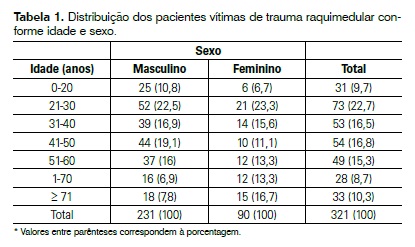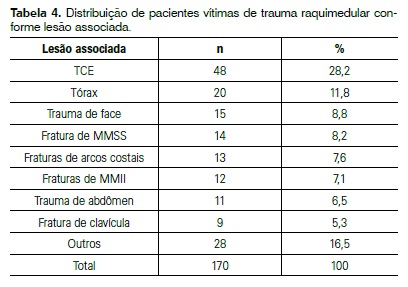OBJECTIVE: Evaluate the epidemiological profile of patients with spinal cord injury (SCI) treated in a tertiary hospital. METHODS: Descriptive, transversal and prospective study with 321 patients, conducted from January/2009 to June/2012. Variables studied: sex; age; marital status; profession; schooling; religion; origin; etiology, morphology and region of the lesion; neurological status by ASIA and the associated lesions. RESULTS: The sample consisted of 72% males and 28% females, the prevalent age group was 21-30 years. The most common marital status was married (46.8%) and singles (41.7%). The educational level was incomplete (57%) and complete (17.8%) elementary school. The most common causes were traffic accidents (38.9%) and falls (27.4%). The most common injury was burst fracture (23.7%), the most affected areas were subaxial cervical (41.7%) and thoracolumbar transition (30.5%). The most frequent associated injury was traumatic brain injury (TBI) (28.2%). The most frequent neurological condition at admission/discharge was ASIA-E. There were 25 deaths (7.8%) and 76% with lesion in the cervical region were classified with ASIA-A and 68% had respiratory complications. CONCLUSION: SCI affected more married young adult males with low level of education. The most common cause was motor vehicle accident, the type of injury was burst fracture and the cervical region was the most affected. The most common neurological status was ASIA-E and TBI was the most frequente associated injury and the greater severity by ASIA in cases with the cervical involvement increased the risk of respiratory complications and morbidity and mortality.
Spinal injuries; Spinal fractures; Epidemiology






